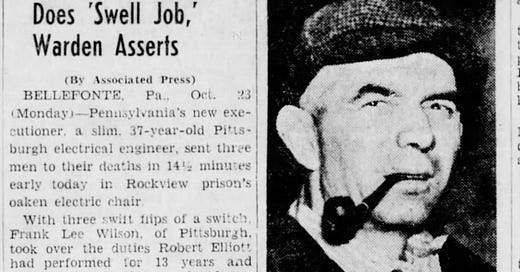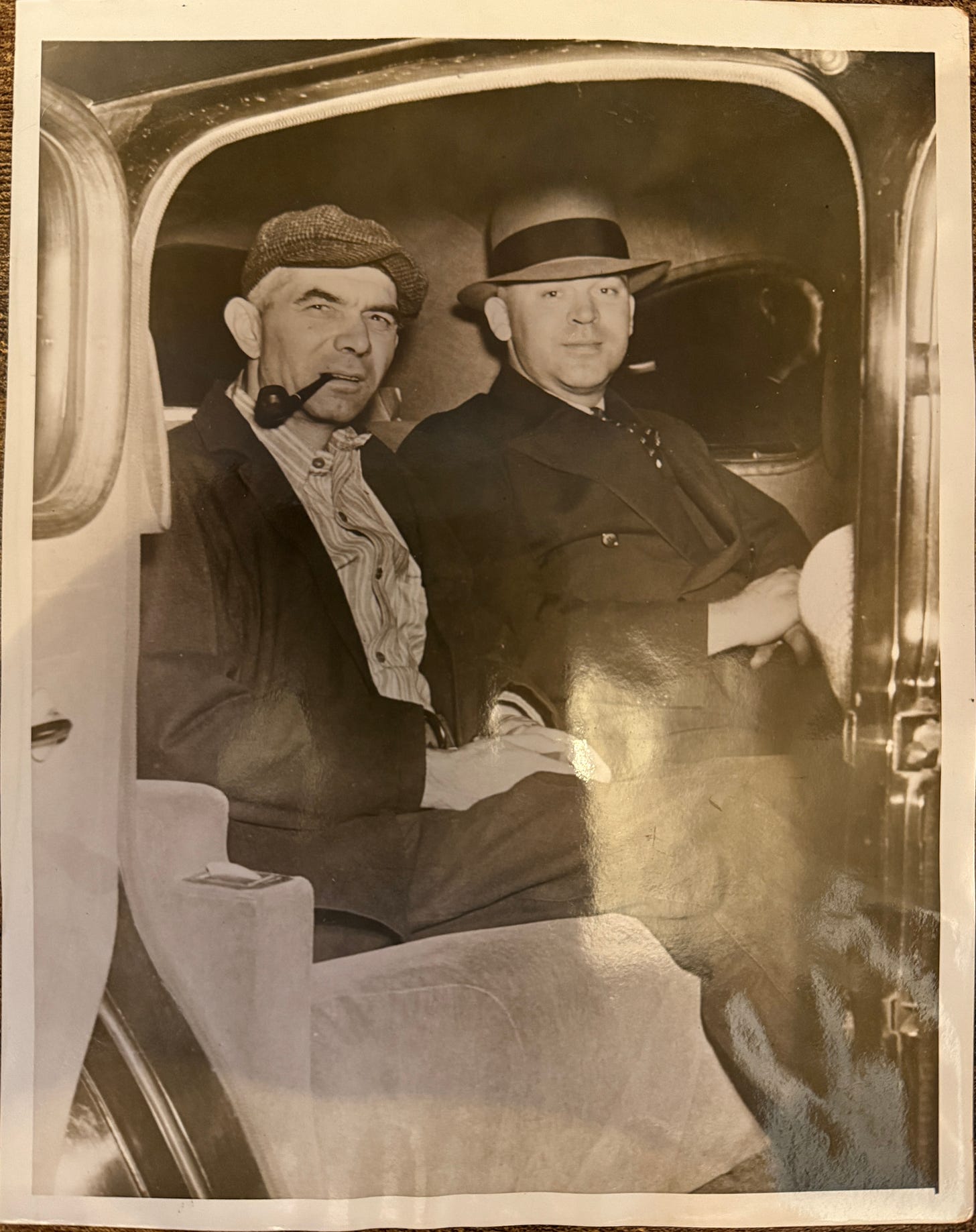Every family’s got its own gospel, a greasy little testament written in blood, whiskey, and the kind of secrets that rot the bones from the inside out. My mother’s family, the Bielanin/Bayhurst clan out of Erie, Pennsylvania, is no exception — hell, we might be the rule. Here’s a tale for you, a tale that starts in the black basement of memory and ends with a flicker of electricity in the dark.
The Madness in the Blood
My great-grandmother, Mary Joan Ferry Bielanin, was a woman of many faces—literally. Back in the days when they called it “multiple personality disorder” and locked you away for hearing voices, she cracked after finding her own mother’s corpse cooling in the basement. Trauma like that doesn’t just echo; it splits the mind wide open, lets the shadows crawl in.
The Facts—Sharp and Cold
I love facts. They’re the only thing that keep the howling at bay. But my mother? She’s the unreliable narrator in the novel of my life, and the rest of the family would rather dress up the truth in carnival colors than face the meat of the matter.
But here’s what’s real:
My great-great-great-grandfather, Paul Ferry, a Czech immigrant with a taste for rotgut and violence, murdered his wife, Mary Helmeci Ferry, on May 8, 1936.
The tools: a knife and a hatchet, as if one weren’t enough to get the job done.
His lawyer, a man paid to believe the impossible, dragged the case to the Pennsylvania Supreme Court, whining about circumstantial evidence. But Paul was a mean drunk, a regular at the courthouse for assault and battery, and even his own children stood up in court to damn him. The trial transcript reads like a fever dream: “I will kill her; I will chop her up and nobody will ever find her.” And before the deed: “Well, this time it won’t be a poker or a knife; this time it will be a hatchet.” A poet, our Paul.
The Vanishing
On May 7, 1936, Mary quit her hotel job, said she was done, planned a visit to her folks in McKees Rocks. She stopped by home, hit the grocer with a few bucks in her purse, and then — vanished.
Paul, fresh out of jail and drunk by noon, was the only one home with her. Their fourteen-year-old daughter came home from school, found the doors locked, got sent away. When she returned, she had to crawl through a window. Inside: chaos. A clump of hair in the front room, stains — dark, damning — on the kitchen floor. As she moved toward the basement, Paul stopped her, muttering, “Why was I ever born? Why did I do it?”
The Discovery
May 9th. Paul’s son and a friend went down to the basement and found Mary’s body, hidden behind wood. Three rugs from the front room, a knife wrapped inside, stashed under a backyard board. Blood everywhere — on the rugs, the house, the heel of Paul’s slipper. A hatchet, crusted with blood, hidden on top of the basement wall. Mary’s coat, hat, and purse? Under the mattress.
The Money Trail
On the morning of May 7th, a bartender swore Paul was broke —fifteen cents to his name. The next day, he’s flush, spending an hour and a half getting loaded at the café, leaving Mary’s purse behind, complete with a $4.08 grocery credit slip.
That night, Paul tried to sell his wife’s clothes under a fake name, telling anyone who’d listen that he “used to have a wife, but not anymore”. When the law finally caught up, he was hiding in an empty lot, shaking and small. Despite his legendary drinking, the doctors found him sane enough to fry.
The End of the Line
Paul Ferry was shipped off to Fairview State Hospital, the dumping ground for the criminally insane in those days. He dodged the electric chair thirteen times, but on January 23, 1939, at 12:31 am, he sat down for his last appointment with destiny. By 12:34, he was dead. The papers made a show of it, crowing about Pennsylvania’s new executioner, Frank Lee Wilson, who took longer than the last guy — three men in fourteen minutes, a new state record.
The Ghost in the Records
I tried to dig up Paul’s real name, but it’s a lost cause. “Paul Ferry” doesn’t sound Czech, but who knows what the Ellis Island clerks did to his birthright. The old country’s records are ash and dust after two world wars and the Velvet Revolution.
I even found a photo of him — sent by a true crime aficionado in Tulsa — and his name shows up in a 1942 FBI bulletin about blood analysis in capital cases. Even dead, Paul Ferry left a stain.
The Unanswered
I still don’t know what really happened to Mary Joan Ferry Bielanin’s mind. Maybe the trial did it, maybe not. I don’t know Paul’s birth name, but I know where he ended up: buried in the Western State Penitentiary Cemetery in Bellefonte, Pennsylvania.
That’s the gospel, straight and unvarnished. The rest is just noise.







Your very own Green Mile. This was a banger to read.